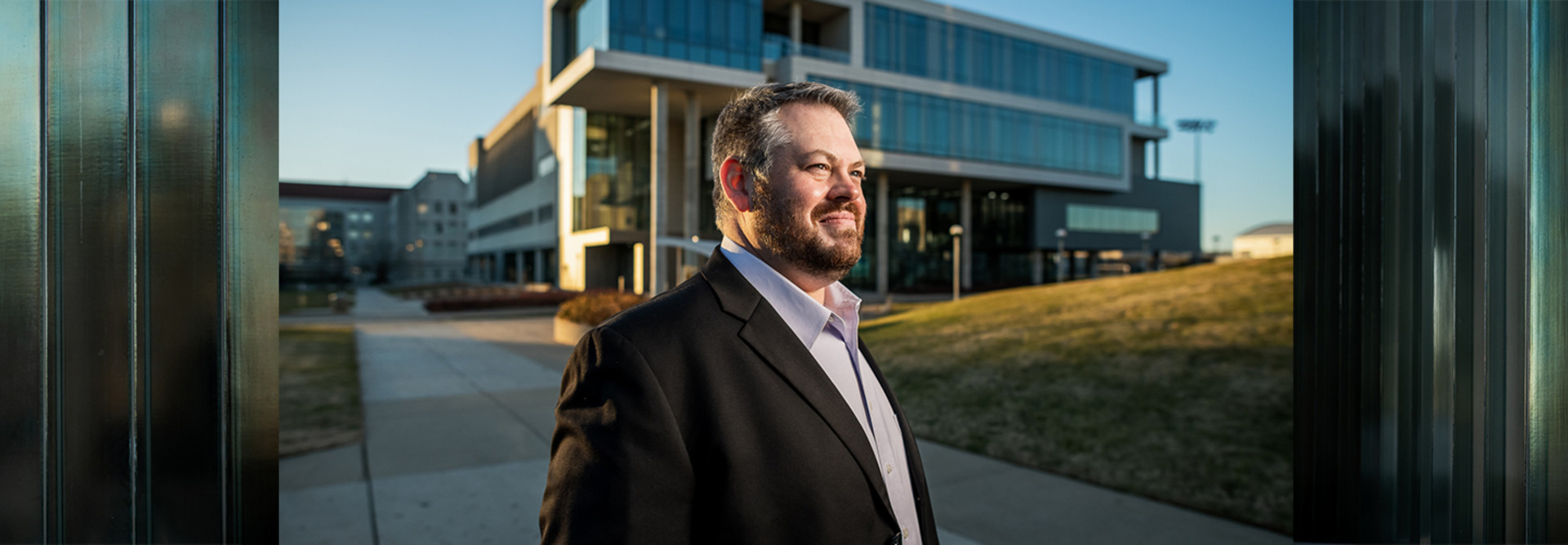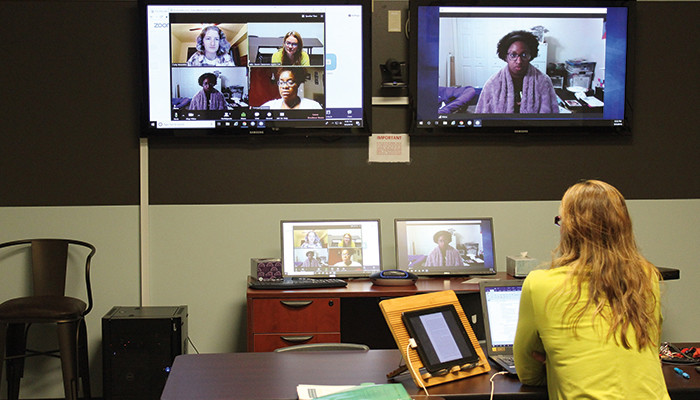Each room is equipped with one of two Poly Studio videoconferencing devices (the X30, which connects to one monitor, or the X50, which can support two) with a built-in camera, microphone and speakers. The system comes loaded with the Zoom software and is managed by IT through an admin interface.
“You can change all the default Zoom Room settings so it works exactly the way you want it to work,” Rhoades explains. One function, for example, allows the administrator to schedule a session to automatically start and finish.
“It lets the instructor use the system remotely,” Rhoades says. “There may be students in the room watching and participating in the discussion, but the faculty member doesn’t actually have to be there.”
Do Zoom Rooms Have a Place in Higher Education's Future?
Another institution leaning heavily on its Zoom Rooms is Kent State Geauga in Burton, Ohio. A regional campus of Kent State University, Geauga recently doubled its videoconferencing space from one Zoom Room before the pandemic to two at the beginning of the fall semester.
Lance Williams, the university’s director of operations and special projects, describes the rooms as “multipurpose, hybrid-flexible solutions.” Faculty had used the original Zoom Room primarily to extend the reach of their in-person lectures to students tuning in from other Kent State sites, he explains. Now they’re using both spaces for a variety of conferencing configurations.
For example, an instructor might use a Zoom Room to record a lecture to be disseminated asynchronously later in the week, Williams says. Another might use the space to teach in real time, with students participating from home. Geauga’s staff and administrators often use the rooms for day-to-day business.
MORE ON EDTECH: Learn these tech tips for colleges using Zoom.
“They’ve made it easier for us to connect with our affiliate regional campuses whenever we’d normally be meeting as a group,” he explains.
As Geauga and Kent State look ahead, Williams notes, they see Zoom Rooms and similar videoconferencing spaces becoming more and more important to the university’s mission. For one, he explains, they can be extremely cost-effective by reducing the number of faculty the institution needs to hire to provide instruction across multiple regional campuses. They can also make it easier for students to take the classes they need to graduate.
With that in mind, Williams says, it’s highly likely that Kent State Geauga will build additional Zoom Rooms in the coming months and years. The two spaces it already has have shown their value by helping to keep the campus together at a time when everyone has had to stay apart. In the future, he predicts, they may serve other purposes, “but they’ll still be all about making connections and about helping our students and our community at large.”












